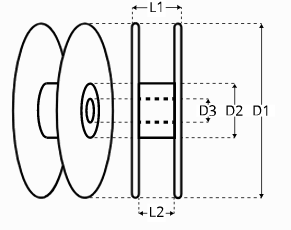Knowde Enhanced TDS
Identification & Functionality
- Chemical Family
- Polymer Name
- Technologies
- Product Families
Features & Benefits
- Materials Features
- Benefits
Mechanically similar to ABS, Nanovia ASA benefits from better weather resistance and is adapted for outside use, allowing for prints subjected to the sun, cold, rain, and sea water.
- Advantages
- Shock resistant.
- Soluble in limonene.
- Easy to print.
- Good heat resistance.
Applications & Uses
- Markets
- Plastics & Elastomers End Uses
- Plastics & Elastomers Processing Methods
- Application Recommendations
Printing
Small parts are printable without an enclosure.
Post treatment
- For an outdoor usage, we recommend that you paint your print or submit them to an anti UV treatment, such as our Nanovia smoothing solution.
- Nanovia HIPS used as a support material can be removed manually or dissolved using limonene.
Properties
- Physical Form
- Mechanical Properties
- Typical Properties
- Thermal Properties
| Value | Units | Test Method / Conditions | |
| Density | 0.93 | g/cm3 | ISO 1183 |
| Value | Units | Test Method / Conditions | |
| Extrusion Temperature (3D Printing) | 230 - 240 | °C | — |
| Plate Temperature (3D Printing) | 90 - 110 | °C | — |
| Enclosure Temperature (3D Printing) | 90.0 | °C | — |
| Nozzle (3D Printing) | All | — | — |
| Printing speed (3D Printing) | 60.0 | mm/s | — |
| Diameter | 1.75 (+/- 50) | mm(µm) | — |
| Linear Weight (3D Printing, Ø 1.75 mm) | 2.24 | g/m | — |
| Linear Weight (3D Printing, Ø 2.85 mm) | 5.96 | g/m | — |
| Value | Units | Test Method / Conditions | |
| Glass Transition Temperature | 101.0 | °C | — |
Safety & Health
- Health and Safety
Printing
We recommend printing Nanovia HIPS in a room equipped with air extraction or by using appropriate breathing equipment. Whilst printing HIPS produces a VOC derivative.
Post treatmentWe recommend wearing standard safety equipment during the post treatment of your prints made with Nanovia HIPS.
Packaging & Availability
- Packaging Type
- Packing

Spools are packed in individual boxes, sous-vide with desiccant. Spools are equipped with both material traceability and a production series number.
Other sizes are available up to 25kg on demand.
Spool L1 L2 D1 D2 D3 500g 55 45 200 105 52 2kg 100 90 300 210 52
Storage & Handling
- Storage
- Store Nanovia ASA in a dry and dark location, if possible with a desiccant.
- In order to guarantee good printing conditions dehydrate Nanovia ASA at 60°c for 4 hours or longer, when the spools has been exposed to moisture for an extended period.

